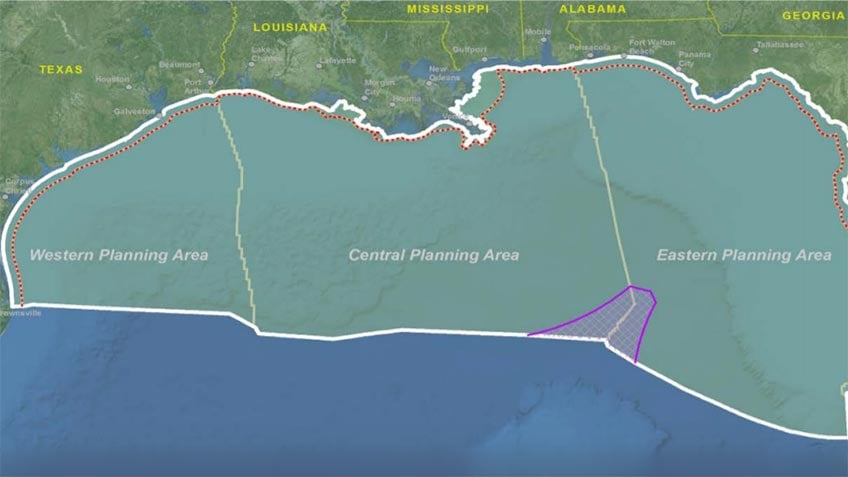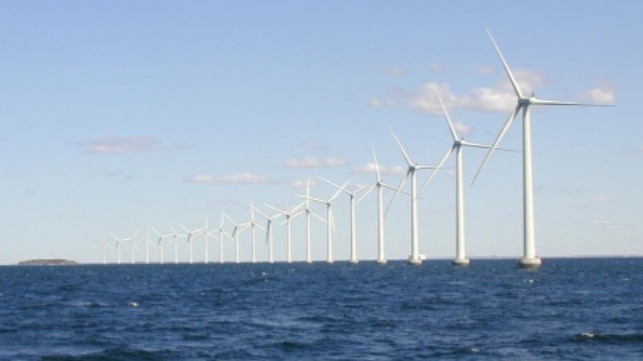
Thibodaux Library Branch Offers Community New Opportunities with Renovations and Additions
June 15, 2021
CIS is First in Southeast U.S. to use PRESSANA® Catheter
June 15, 2021The Biden Administration has announced its first effort to assess potential opportunities for wind energy in the Gulf of Mexico. This announcement comes two weeks after the announcement of plans to expand offshore wind on the Pacific Coast which is a part of the president’s plan to generate 30 gigawatts of renewable energy from wind by 2030.
The Bureau of Ocean Energy Management (BOEM) announced it published a ‘Request for Interest in the Federal Register on June 11 which assesses interest in potential offshore wind development along the Gulf Coast. It will focus on the Western and Central Planning Areas of the Gulf of Mexico offshore the states of Louisiana, Texas, Mississippi, and Alabama. BOEM also is seeking information on other renewable energy technologies.
Mike Celata, regional director of BOEM’s Gulf of Mexico office in New Orleans, said, “The Gulf of Mexico has decades of offshore energy development expertise. Today’s announcement represents the first step in harnessing that expertise and applying it to the renewable energy sector. Working directly with our partners in the Gulf, we will make sure that offshore renewable energy development proceeds in an orderly, safe, and environmentally responsible manner.”
Once the RFI is published, there will be a 45-day public comment period to seek both expressions of competitive interest and any additional information on potential environmental consequences, and other uses of the proposed area. The data will be used to determine the next steps in the renewable energy leasing process in the Gulf. Starting June 15, the BOEM will also convene the Gulf of Mexico Intergovernmental Renewable Energy Task Force to help coordinate planning, solicit feedback, and exchange scientific and process information.
The BOEM reported that it has leased “approximately 1.7 million acres for offshore wind development and has 17 commercial leases on the Atlantic.” This comes after the Biden Administration announced an agreement to advance offshore wind off of the northern and central coasts of California. The BOEM began the process to explore three areas in 2018. The new announcement is said to have reached an agreement to advance areas for offshore wind. This included roughly 399 square miles northwest of Morro Bay that will support 3 gigawatts of offshore wind. In total, these initial areas for offshore wind development could potentially provide up to 4.6 GW of clean energy.
Governor John Bel Edwards announced back in 2020 a renewable energy initiative for the Gulf of Mexico with plans to harness Louisiana’s strengths in offshore energy production for the development of wind power. The announcement was presented at an inaugural meeting of the Climate Initiatives Task Force that he created in early 2020. Although Governor Edwards has expressed interest in the development of offshore wind projects, the oil and gas industry was frustrated by the President’s decision to pause all new offshore oil and gas leases that has led to losses in economic dollars.
There are two studies, conducted by The National Renewable Energy Laboratory (NREL) and funded by BOEM, that find the Gulf of Mexico is well positioned for offshore wind development.
The study was conducted to assess the feasibility of various potential offshore energy resources in the Gulf and determine which technologies offer the most promise to meet the future energy needs. The study analyzed different offshore renewable energy technologies, including offshore wind, wave, tidal, ocean current, ocean-based solar, ocean thermal, deep water source cooling, and hydrogen conversion and transport, to determine which are best suited for electric utility-sale development in the Gulf. Wind was found to offer a technically feasible resource potential of 508 gigawatts which is the largest of any technologies analyzed. They further analyzed the economic feasibility of offshore wind both regionally and for selected sites, which was the focus of the second study, “Offshore Wind in the U.S. Gulf of Mexico: Regional Economic Modeling & Site-Specific Analyses.” NRE established selection criteria for hypothetical wind plant locations throughout the Gulf and recommended six viable study areas: Port Isabel, Port Arthur, and Galveston in Texas; Pensacola and Panama City in Florida; and New Orleans, Louisiana. They predicted that costs will decline steadily over the next decade with some sites reaching the threshold of economic viability by 2030. They also understood that the new technology adaptations for hurricanes and lower wind speeds would have to be put in place.
They predicted that a single offshore wind project could support roughly 4,470 jobs with $445 million in gross domestic product (GDP) during the construction of the sites, and an ongoing 150 jobs with $14 million GDP annually from site operation and maintenance labor, materials, and services. These findings were based on a 600-megawatt project at the Port Arthur reference site with a commercial operation date of 2030.
Could this be a viable option in the south?
“The oil and gas supply chain sees this as a major opportunity moving forward,” said Erik Milito, president of the National Ocean Industries Association (NOIA), a Washington, DC-based trade group. “It is really additive to what energy needs the US and the global economy are going to have over time.”







